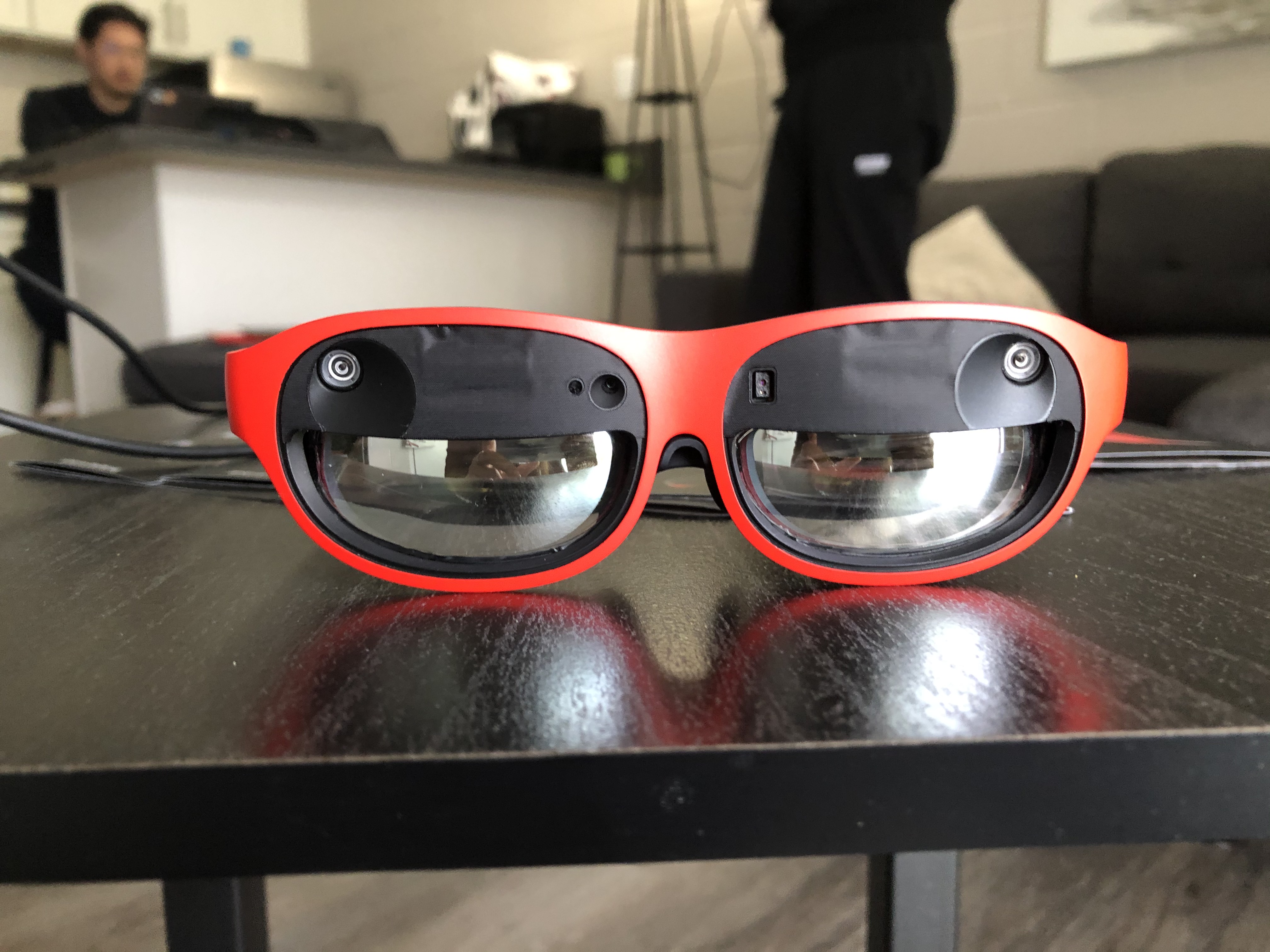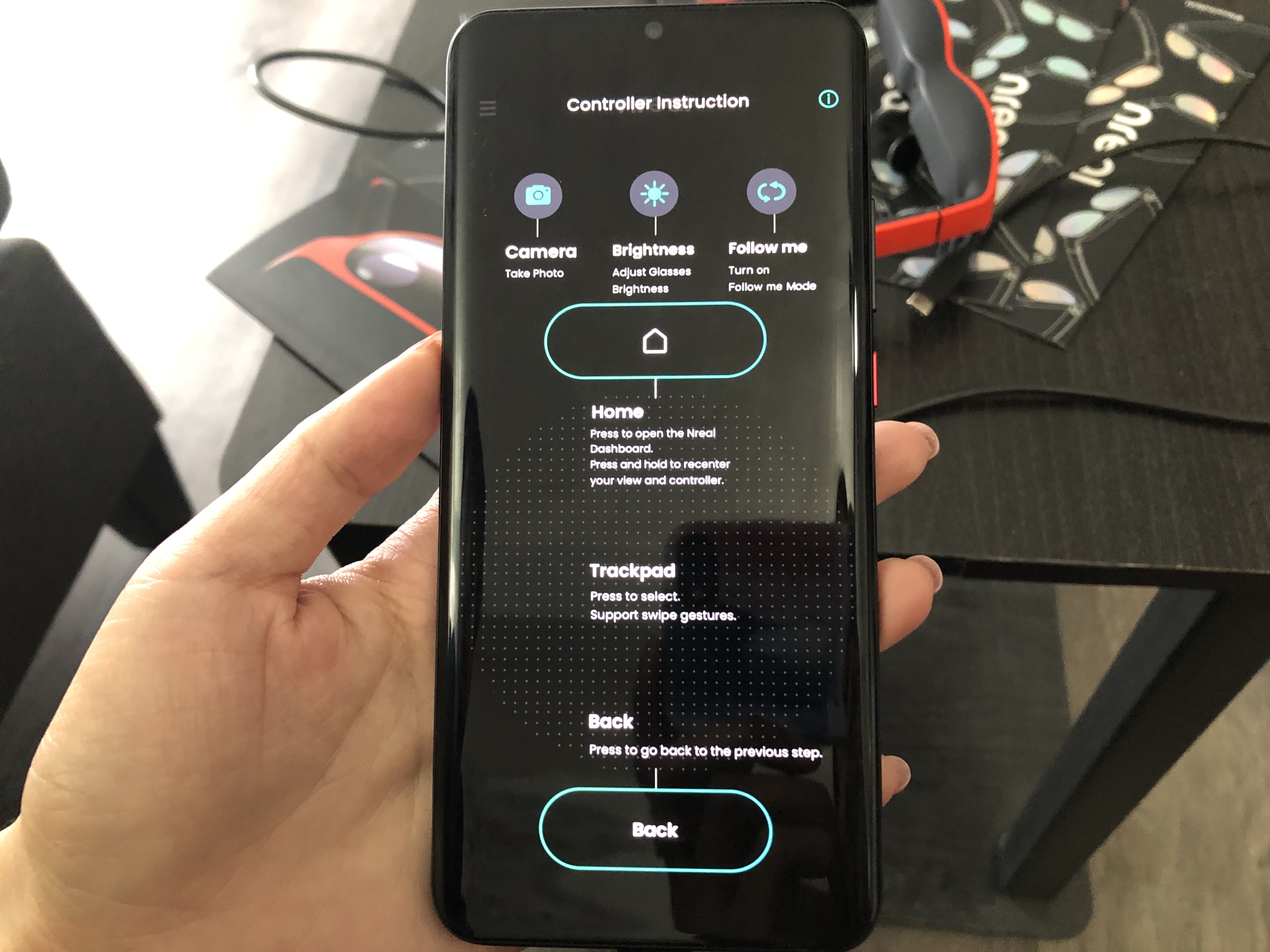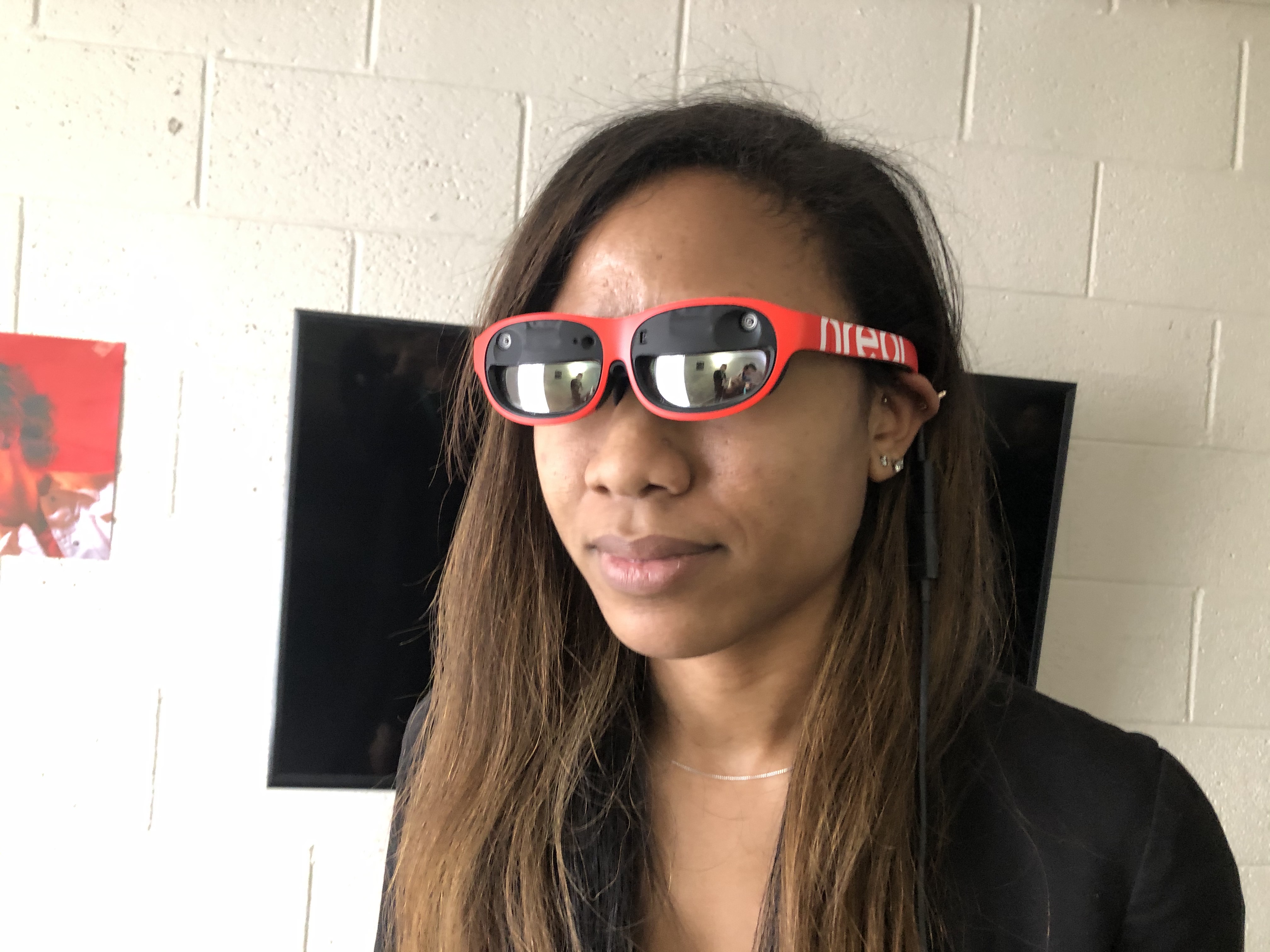Nreal Light Mixed Reality Glasses Turned My Favorite Apps Into Massive, Mesmerizing AR
Android apps work just like they do on a smartphone, but with an augmented twist.
Imagine your favorite smartphone apps blown up in front of your eyes to the size of a wall in augmented reality (AR) form. Now add the ability to interact with that app, make the window appear smaller or larger, move it around or even open another app, also in massive AR form, beside it. That’s exactly what I experienced when I tried out the glasses and their new UI, and with Nreal Light’s bright display this could be the most consumer-friendly take on an MR system yet.
I got to demo the glasses at CES this week and the experience was very intuitive. Nebula, the glasses’ new 3D UI, takes any native Android app and translates it into AR that looks sharp, crisp and bright.
Connection to the glasses’ USB-C cable coming out of the left arm and downloading the free companion turns Android smartphones into a controller with 3-degrees of freedom with the screen serving as a trackpad. I could open multiple apps, like Netflix and Spotify, and rearrange them, even off outside my immediate field of view (FOV). This usually worked on first try, although occasionally it would lag. These kinks should be ironed out before their official consumer release, however.
The Nebula UI uses 3D tracking, courtesy of two SLAM tracking cameras, which live on the outer edge of each lens.There’s also an RGB camera that allows users to share screenshots of what they’re seeing. Meanwhile, the smartphone turned into a controller with 3-degrees of freedom and a trackpad through the app.
The glasses also have spatial sound speakers for offering 360-degree sound. When I played an AR zombie game and watched some YouTube with the glasses, audio was certainly loud and clear, and I even had to turn it down to properly hear the person next to me. But I didn’t get to experience how well the surround sound works.
Although MR glasses are an emerging tech, the learning curve with Nreal Light is very minimal. Within minutes I was easily able to navigate the Nebula UI and its apps, simply because the apps work and look just like they would on an Android phone. An Nreal rep told me that they may make special MR versions of popular apps later this year, but couldn’t get into specifics.
But unlike on my smartphone, apps viewed on Nreal Light looked massive. Nreal says it’s comparable to watching a 200-inch TV with a 52-degree field of view (FOV).
Get Tom's Hardware's best news and in-depth reviews, straight to your inbox.
Watching a YouTube video on the glasses was a breeze, even in a partially sunlit room with white walls. We can attribute this to the image’s 1,000 nits brightness and 1080p resolution per eye. The AR image was sharp and strong enough that the white wall and its decorations weren’t visible through the video. Meanwhile, over on the right side I could have another app open, like a gallery that automatically pulls photos from your phone and turns them into a mesmerizing AR experience. It was like having an entire wall as my own private screen.
Nreal Light can also be used for gaming, with the vendor already featuring 3 games, including Kingdom of Blades, which Nreal’s announcement described as “an MR slicing action game that has gamers slice through and defeat waves of enemies” and Arcade Fight, “an arcade-style side-scrolling fighter game.” I tried my hand at Zombie Bomber AR and used the smartphone’s screen to fling bombs, barrels and even some vegetables and AR zombies crawling and limping toward me. Zombie growls filled my ears, thanks to the speakers, and with the augmented undead being a life-like size, this simple game turned out to be a unique experience.
A shopping app made with AR developer MESON showed life-size models sporting potential buys and let me twirl them around and see how much their clothing and accessories cost. However, the clothing and models looked like 3D models rather than real, so I think I’d still have to check out a store in person or even look at online photos with a human model before opening my wallet.
Eventually, Nreal will gain eye tracking from 7invensun, so there’s even more potential for making your eyes says wow.
Unfortunately for iPhone users, Nreal Light is only compatible with Android smartphones, PCs or tablets; however, you can use iPads with screen mirroring. Nreal said it’s working on developing accessories to make it compatible with the iPhone, since iPhones don’t have a USB-C port for connection.
Speaking of connecting to your phone, this may not be as simple as you think. Nreal Light are the only MR glasses with foldable arms. Doing that took some creative engineering in order to avoid having a wire protruding out of the bend. At the hinge, the connecting wire’s structure uses a flexible component, allowing the glasses to hold and store like, well, regular glasses.
Other considerations include the option of prescription lenses (this will cost extra), swappable, magnetic nosepads and your choice of red, blue, black or white specs. But although the Nreal Light’s looks a lot better than most MR glasses out there, between the reflective lenses and the black strip running on top you still won’t be wearing them on any dates.
Hundreds of developers already have Nreal Light’s $1,199 developer kit. But regular consumers can pick it up for $499 in “early 2020.”

Scharon Harding has over a decade of experience reporting on technology with a special affinity for gaming peripherals (especially monitors), laptops, and virtual reality. Previously, she covered business technology, including hardware, software, cyber security, cloud, and other IT happenings, at Channelnomics, with bylines at CRN UK.





